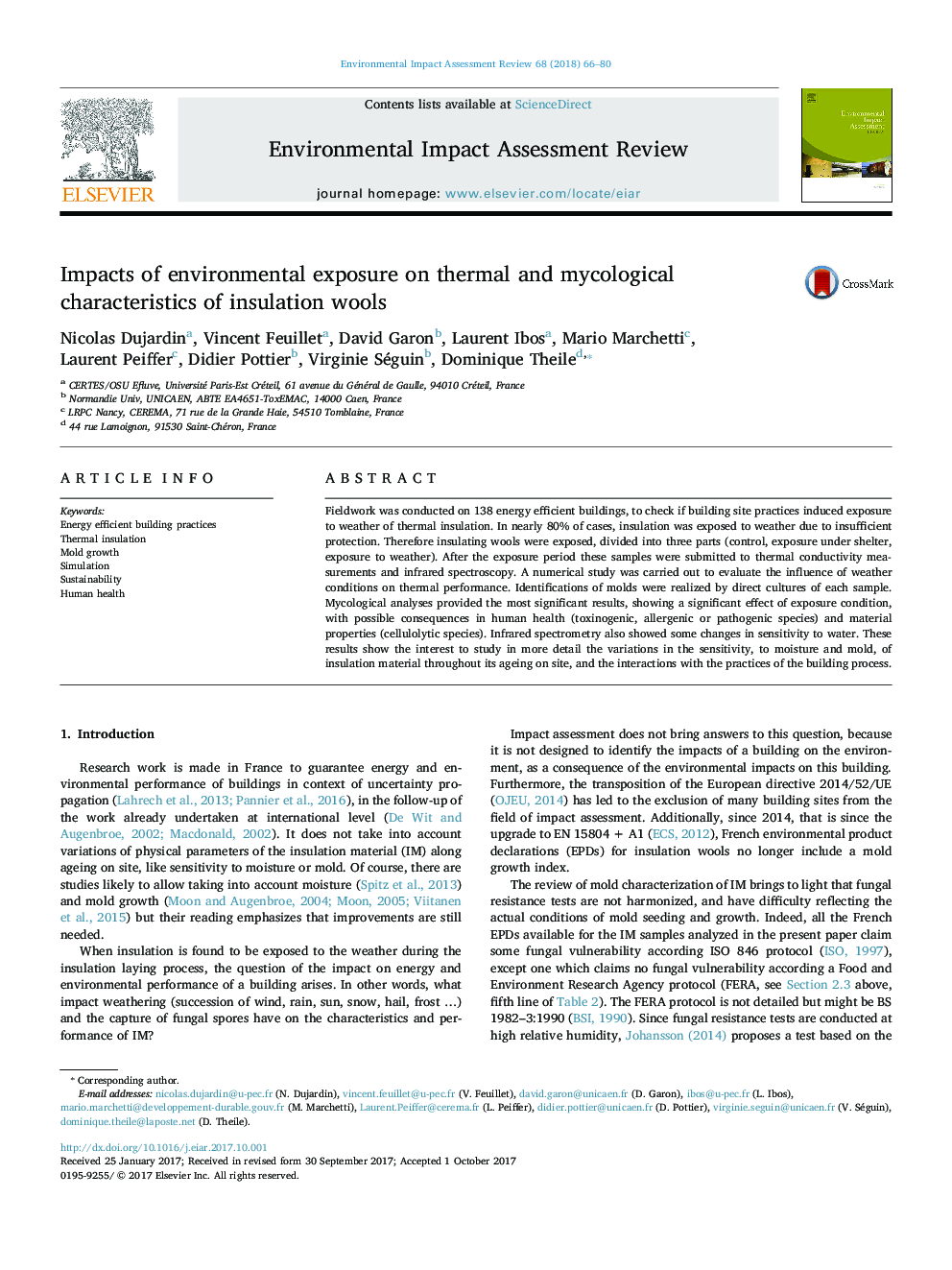| Article ID | Journal | Published Year | Pages | File Type |
|---|---|---|---|---|
| 7464958 | Environmental Impact Assessment Review | 2018 | 15 Pages |
Abstract
Fieldwork was conducted on 138 energy efficient buildings, to check if building site practices induced exposure to weather of thermal insulation. In nearly 80% of cases, insulation was exposed to weather due to insufficient protection. Therefore insulating wools were exposed, divided into three parts (control, exposure under shelter, exposure to weather). After the exposure period these samples were submitted to thermal conductivity measurements and infrared spectroscopy. A numerical study was carried out to evaluate the influence of weather conditions on thermal performance. Identifications of molds were realized by direct cultures of each sample. Mycological analyses provided the most significant results, showing a significant effect of exposure condition, with possible consequences in human health (toxinogenic, allergenic or pathogenic species) and material properties (cellulolytic species). Infrared spectrometry also showed some changes in sensitivity to water. These results show the interest to study in more detail the variations in the sensitivity, to moisture and mold, of insulation material throughout its ageing on site, and the interactions with the practices of the building process.
Related Topics
Physical Sciences and Engineering
Energy
Renewable Energy, Sustainability and the Environment
Authors
Nicolas Dujardin, Vincent Feuillet, David Garon, Laurent Ibos, Mario Marchetti, Laurent Peiffer, Didier Pottier, Virginie Séguin, Dominique Theile,
